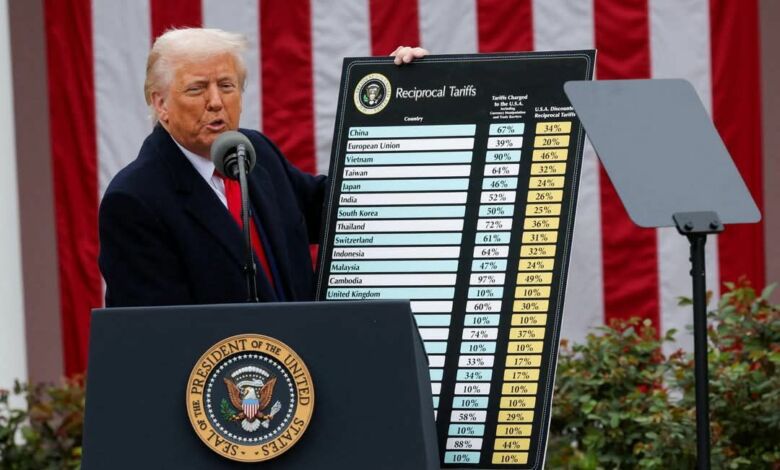Despite Tariff Threats: Globalization Continues to Expand Amid Protectionist Winds

Aldar / Analysis
With Donald Trump potentially returning to the White House, concerns are mounting over the impact of his protectionist trade policies on the future of global commerce. The so-called “Liberation Day,” as Trump calls it, is fast approaching, bringing with it plans for new “reciprocal” tariffs that could shake the foundations of the global trading system. Amid slowing goods trade and the growing influence of national security in economic policymaking, some fear these measures could be the final blow to globalization.
However, actual data and trends paint a different picture. Despite being the world’s largest economy, the United States’ share of global goods imports has dropped to around 13%, down from nearly 20% two decades ago. This makes it a major player, but not the sole force capable of steering the course of globalization.
Research suggests that global economies can quickly adapt to any contraction in the American market. Even in a pessimistic scenario where Washington cuts off imports completely, most of its trading partners could recover their losses within a few years. Today, Europe and China play a more pivotal role in driving global trade forward, with both continuing to advocate for open trade — whether for economic or strategic reasons.
China, for example, is working to expand its economic influence through initiatives like the Belt and Road, while Europe focuses on deeper internal integration and stronger cooperation with powers like China and India. According to recent reports, countries like India, Southeast Asia, and the Middle East are expected to support the growth of global trade through 2029.
Although some countries have shifted attention toward supply chain security in the aftermath of the pandemic and the war in Ukraine, few are adopting Trump’s isolationist approach. Smaller and developing nations understand that they cannot maintain a reasonable standard of living without trade. In fact, many governments are actively working to offset America’s retreat by signing new agreements — as shown by recent deals involving the European Union, Mercosur, Australia, and the UAE.
Even in worst-case scenarios, the projected decline in global trade volumes would not exceed 10% relative to expected growth — meaning the world would still see net growth in trade by 2029. At the same time, the world is witnessing a gradual shift from goods trade to services trade, especially in digital sectors, which are growing much faster and reflect a transformation in the global economic landscape.
Experts point out that globalization is not just about the exchange of goods. It also includes services, data, and capital. And even in the face of rising protectionism, various indicators show that openness remains strong — with flows of trade, information, and people increasing since 2019.
Thus, the protectionist waves signaled by Trump may temporarily hinder trade growth, but they are unlikely to reverse its trajectory. Economic realities — rooted in profitability and efficiency — remain stronger than fleeting political slogans. This is what gives globalization its remarkable resilience.





